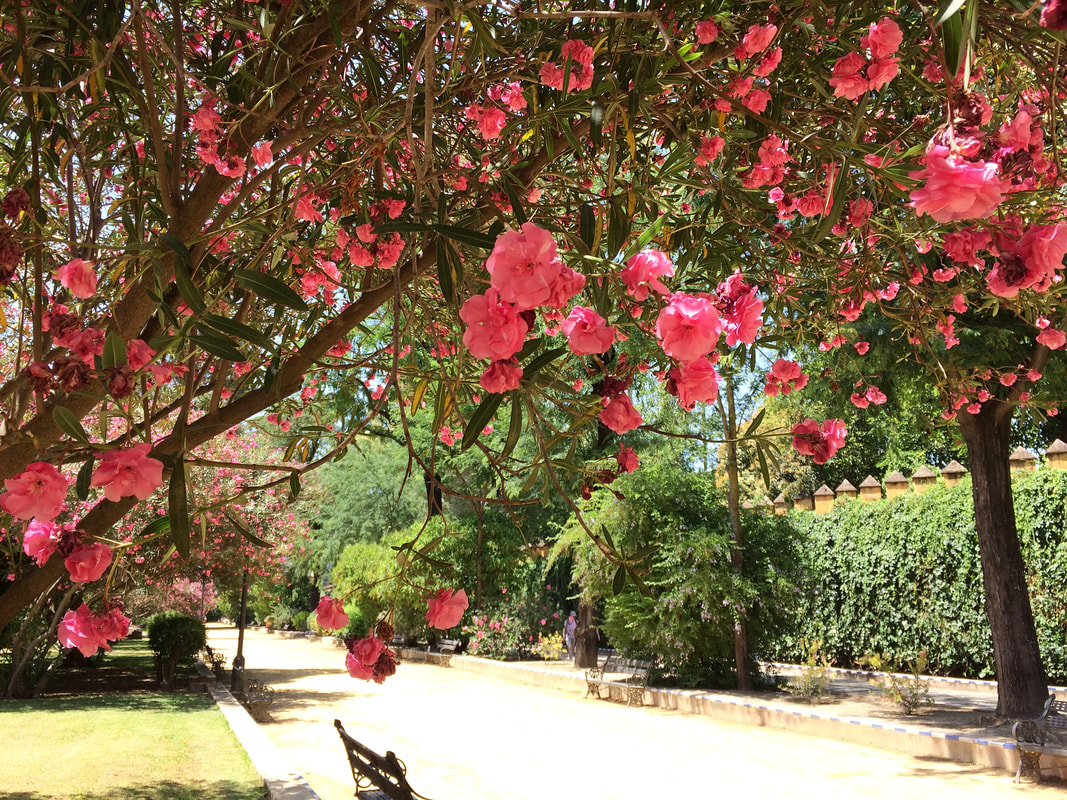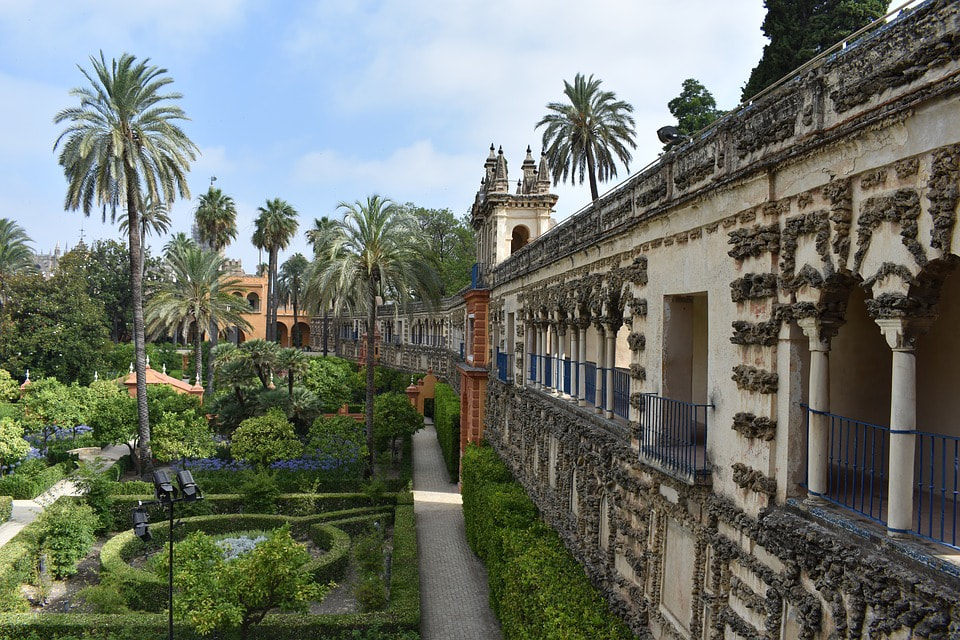If you visit only one park in Spain, Maria Luisa Park is it. The vast complexity of the interconnections between nature and architecture is mind-blowing. You'll discover everything from flowered vintage trellises to a patch of fallen oranges basking in the sunlight. The architectural elements from elegant gazebos to the prominent Plaza de España, discover a piece of Seville history. I spent wandered for two hours in the park, and discovered only a piece of the park. If hungry, eat at the adjacent Bar Citroen cafe as depicted in my recent "Favorite Restaurants & Cafes in Seville."
Between the ancient Alcazar wall and Paseo de Catalina de Ribera, is the Jardines de Murillo. In late May and early June, pink petals gently sway in the wind falling alongside ceramic benches and water fountains. Named after the 17th century Sevillan painter Murillo, discover various monuments, including the notable Christopher Columbus statue.
In this garden, marvel at pieces of the Walls of Seville, which were once defensive walls surrounding the Old Town of Seville. The wall originally had 18 gates, but only four of those exist today.
This Roman Catholic Church is one of the highlights in Seville. Completed in the 16th Century, the Seville Cathedral became the largest church in the world supplanting the Hagia Sophia in Istanbul. The Giralda Tower is 343 meters in height, and was covered into a bell tower after the Reconquista. The "El Giraldillo" statue on top was installed in 1568 to represent the triumph of the Christian faith. The cathedral contains the remains of Christopher Columbus's remains, which has once been transported to various places around the globe.
A must in Seville, Real Alacazar is a place not only to discover lush gardens, but to revisit Sevilla's history. This is one of the oldest palaces left in the world, and an authentic representation of the southern Mediterranean battle between the Moors and the Christians. Constructed began in 913 by And Al Ramn III, and throughout it's history, Real Alcazar experienced several architectural face lifts throughout time. While inside you'll discover precious moments of flora and fauna, but highlights include Mudéjar and Patio de las Doncellas.
Beyond tile-lined benches and tree-lined footpaths, experience a variety of artifacts and paintings in the indoor museum. A small cafe with outdoor seating is also available.
n 1520, Don Fadrique Enríquez de Rivera, the first Marquis of Tarifa, returned to Spain after a two year journey through Europe to the Holy Land.
According to vuelasevilla.com, "Marquis de Tarifa discovered that the distance from his house to a small temple at Cruz del Campo was exactly the same as the distance between the former house of Pontius Pilate and the Golgotha (the biblical name of the place where Jesus was crucified). Back at home, the Marquis created a Way of the Cross with twelve stops along the path to the temple. Hence people started to identify the palace with the House of Pilate and over time it became referred to as such. Several rooms of the palace also have been given names referring to Pontius Pilate such as the Praetor's Room and the Praetor's Study."
Santa Cruz is Seville's oldest Jewish Quarter and one of the most popular areas with tourists, and for good reason. The narrow streets and alleys are like a labyrinth amidst ancient architecture and walls that protect locals from the beaming sun. Plaza de las Cruces is worth a stop to admire three columns topped with wrought-iron crosses. The tallest of the three crosses is a Roman column that once belonged to an unidentified Roman monument.
Check out our other Seville Blogs! Let's Connect!
7 Must-Visit Parks & Gardens in Seville, Spain
My 8 Favorite Cafes & Restaurants in Seville (for Gazpacho & Veg-Friendly Food)
This Lemon Tree article is now featured on GPSmyCity. To download this article for offline reading or travel directions to the attractions highlighted in this article, go to Top Historical Sites You Must See in Seville, Spain.







 RSS Feed
RSS Feed